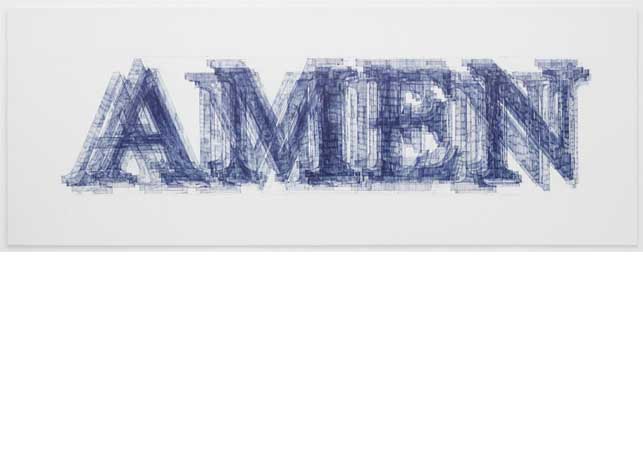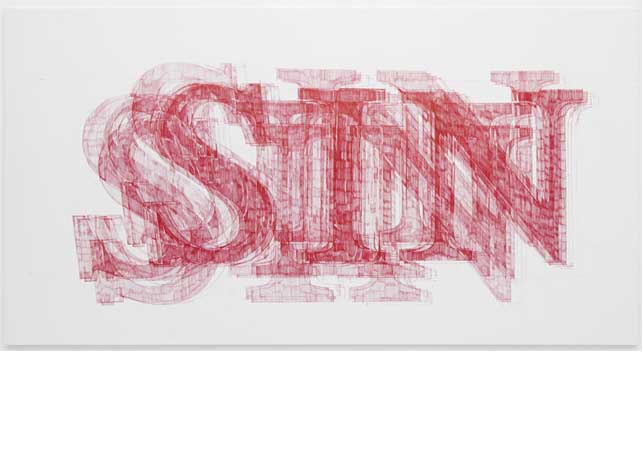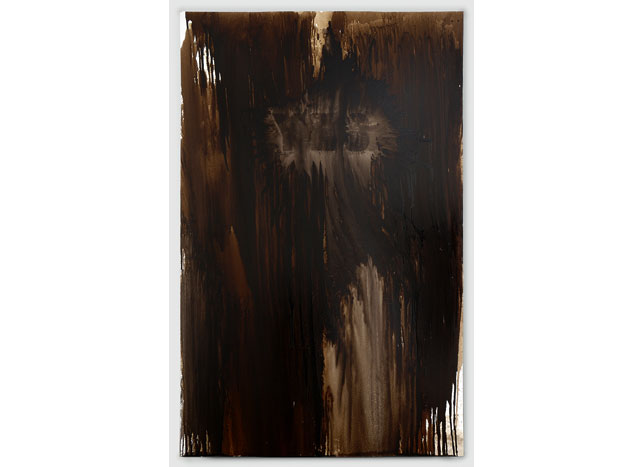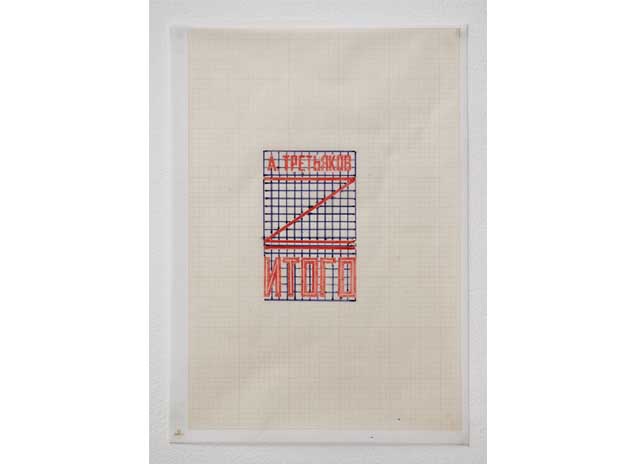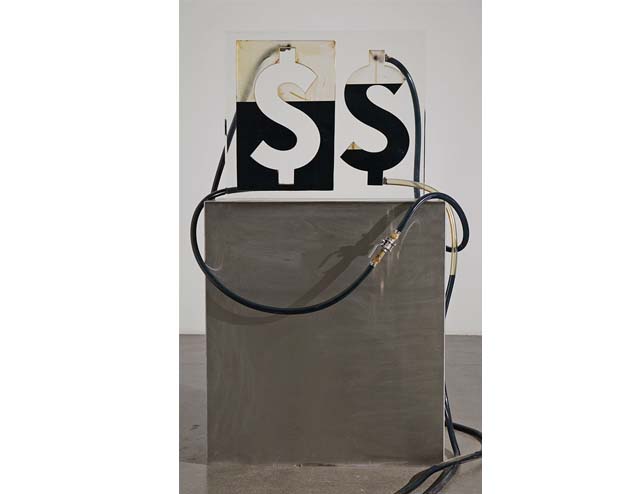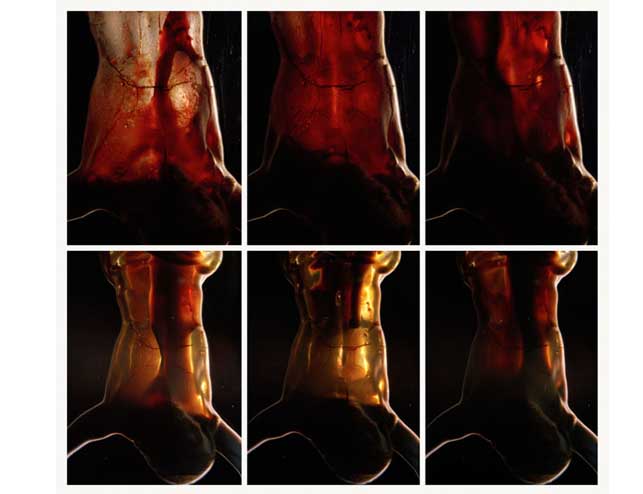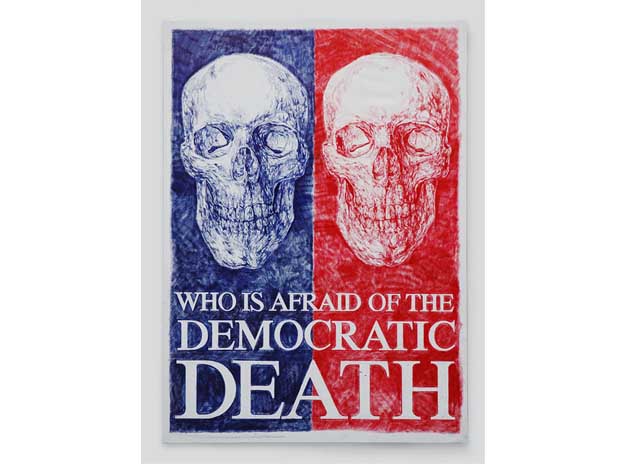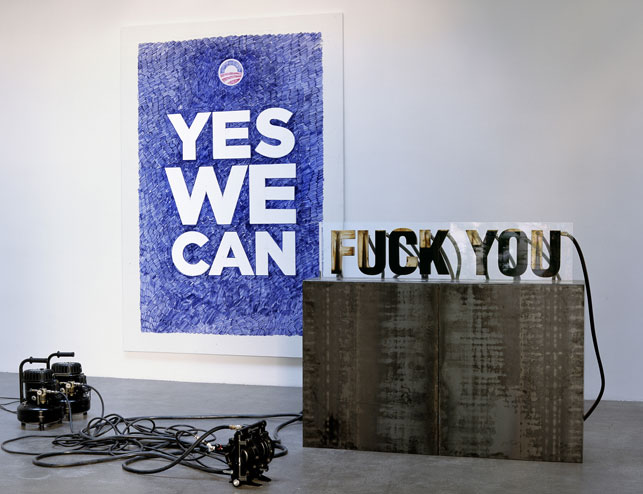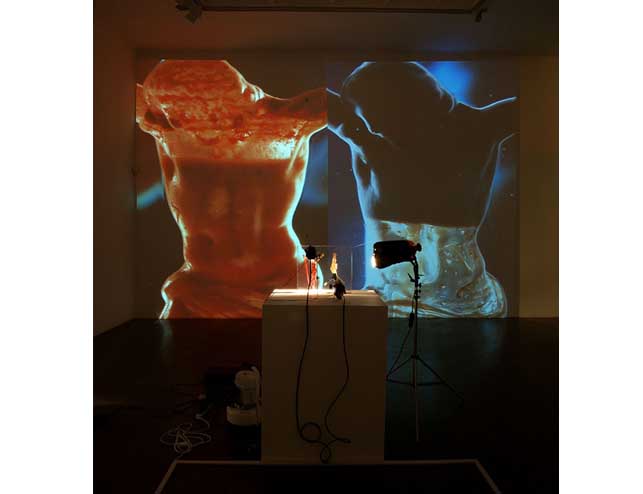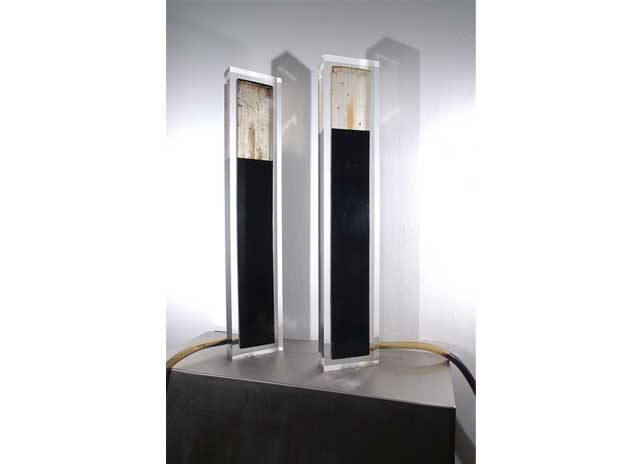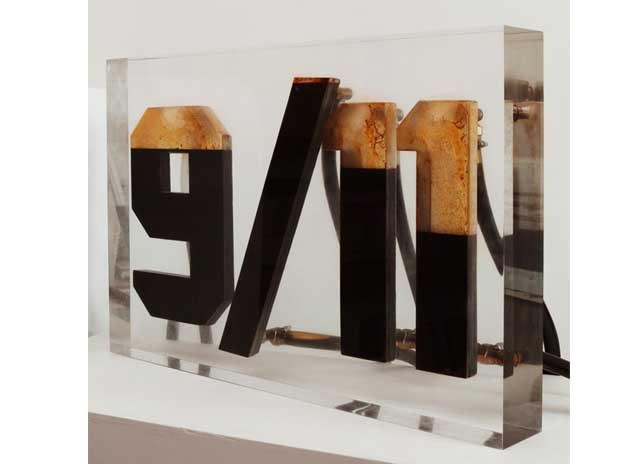

Andrei Molodkin (Boui, North Russia, 1966) è un artista concettuale russo.
L’opera di Andrei Molodkin, caratterizzata costantemente da una dimensione poetica politico-ideologica, si serve con uguale intensità di materiali tra loro diversi quali petrolio, inchiostro o sangue, per articolare l’ossessione che determina l’impianto narrativo del racconto dell’artista: l’economia come entità significante della costruzione simbolica, economica e culturale occidentale.
Il linguaggio e la tecnica caratteristici dell’artista - l’utilizzo del petrolio e dei sistemi idraulici che ne attuano la circolazione, dai compressori alle sculture “simulacro” vuote in resina acrilica - nelle recenti produzioni si articolano frequentemente in una serie di tele di grandi dimensioni realizzate con la penna biro e che riportano slogan o parole in cui i caratteri che li compongono occupano l’intero spazio visivo.
L’evoluzione stilistica dell’artista si è spinta recentemente su di un versante sempre più concettuale, che mira comunque alla continua ricerca di un dialogo con lo spettatore attraverso l’impatto emozionale suscitato dalle proprie opere. Secondo una personale scrittura visiva scandita in termini metaforici, l’inchiostro, nei lavori su tela, diviene così il sangue che fluisce dalla penna, allo stesso modo in cui il petrolio si fa rappresentazione della linfa vitale che scorre nei vasi del sistema simbolico alla base del panorama cognitivo occidentale, in un traslato dove l’umanità oggettualizzata e silenziosa rimane al fondo della narrazione dell’artista.
L’artista russo, articolando il suo linguaggio, riesce in questo modo nella rara impresa di dar vita ad una propria, personale, “tecnica” che lo differenzia profondamente dalle ricerche che vertono sul rapporto uomo-tecnologia e rendono la sua produzione tra le più singolari nel panorama internazionale.
Andrei Molodkin (Boui, North Russia, 1966) is a Russian conceptual artist.
Andrei Molodkin’s work, constantly characterized by a poetic dimension that is constantly political-ideological, makes equal use of materials vastly different from one another – crude oil, ink and blood – in order to articulate his own dark obsession that determines the narrative setting of the artist’s tale: the economy as a significant entity of the symbolic, economic and cultural construction of the West.
The artist’s characteristic language and technique – the use of crude oil and the hydraulic system that keeps it circulating, from compressors to his empty “simulacra” sculptures in acrylic resin – in his latest works often articulate in a series of large-scale canvases created with ballpoint pen that quote slogans or words and the types that form them, fill the whole visual space.
The artist’s stylistic evolution has been driven towards a level that is increasingly conceptual, and which in any case aims to foster the continuous search for a dialogue with his audience through the emotional impact the artwork provokes.
According to a personal visual handwriting measured out in metaphorical terms, ink becomes the blood flowing from a pen, in the same way in which crude oil represents a vital lymph flowing within the vessels of a symbolic system lying at the foundation of the Western cognitive panorama, in an act of relocation in which the objectified and silent humanity remains at the heart of the artist’s narrative effort.
In this manner the Russian artist, articulating his language, manages to achieve the rare feat of giving life to his own, personal “technique”, one that differentiates him substantially from artistic investigations that deal with a realtionship between man and technology, making his artistic production among the most singular present in the international panorama.


